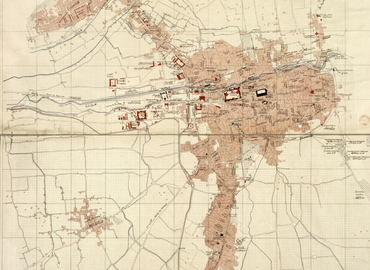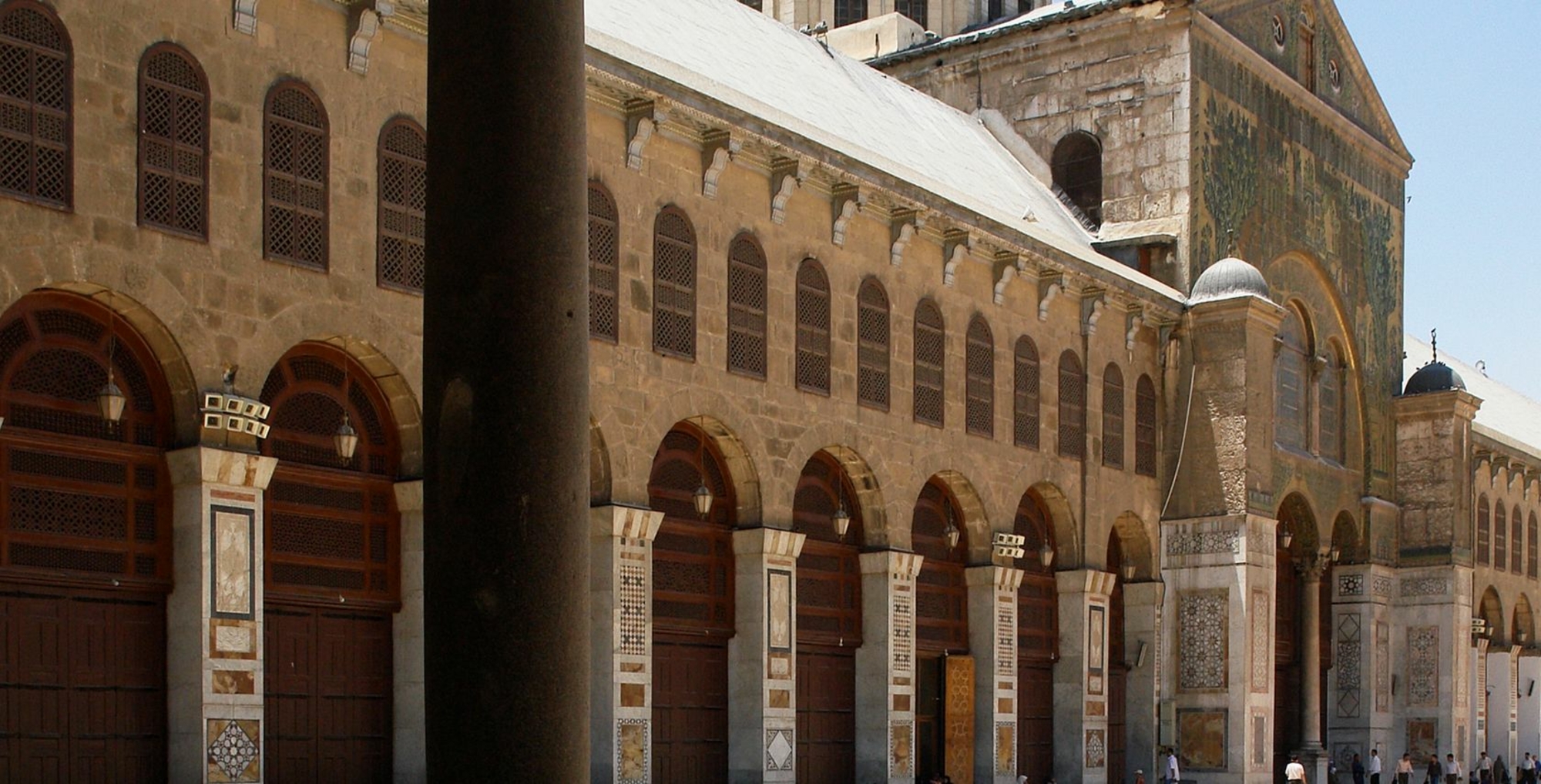


At the heart of the city of Damascus, the Great Umayyad Mosque bears witness to the many tumultuous events that have marked the region’s history since ancient times. It has been the site of a temple dedicated to Hadad, then to Jupiter, a church dedicated to St John the Baptist, and lastly the Great Mosque, built between 705 and 715.
The Great Mosque of Damascus is still celebrated for its gold-ground mosaic decoration. Although only a small proportion of the original decoration remains today, the restorations that followed the fire of 1893 revealed a large series of mosaics until then hidden under thick plaster, to the amazement of specialists and the general public.
Founded in 705, the Great Umayyad Mosque in Damascus was a major milestone in the development of the first arts of Islam, nourished by the artistic traditions of late-antique Syria and strongly influenced by Byzantine and Sassanid art. Other emblematic sites also bear witness to the gradual development of an artistic vocabulary specific to classical Islam.

Minaret of the Bride of the Great Mosque in Damascus. 1875
Médiathèque de l'Architecture et du Patrimoine

Aerial view of the Grand Umayyad Mosque in Damascus. 1968
Aga Khan Trust for Culture

Interior of the Great Mosque of Damascus before 1893, looking north towards the main entrance. Watercolour by R. Phené Spiers.
Victoria and Albert Museum